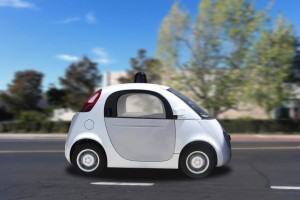An airborne iron manhole cover killed a beloved 35-year-old elementary school art teacher in Massachusetts in February 2016, prompting a massive Department of Transportation inspection of 900 grates and covers on Boston-area highways.
Officials reported they had found no major issues after examining the manholes, electrical panel and sewage drainage systems. Massachusetts State Police are still investigating how the 200-pound cover launched into the air and struck the teacher’s windshield as she neared the edge of the Thomas P. O’Neill Jr. Tunnel.
This stunning fatality raised troubling questions about motorists’ safety in Boston and surrounding areas.
At The Law Offices of Mark E. Salomone, our auto accident lawyers know that while human error causes the majority of car crashes in the U.S., the existence of defective roads or dangerous engineering or lack of maintenance should not be overlooked.
Unfortunately, the Commonwealth of Massachusetts has strong protections for local government agencies from defective streets.
M.G.L. Ch. 81, Section 18 allows the state to be held liable for any defects in highways – so long as the injuries were caused by defects within the limits of the constructed traveled roadway. There are some exceptions, though, including:
- Injuries caused by lack of railing in or upon the state highway;
- Injury sustained on the sidewalk of a state highway;
- Injury during construction, reconstruction or repair of a highway.
The amount that may be recovered should not exceed one-fifth of one-percent of the valuation of the town in which the injury was received – nor can it exceed $4,000.
Obviously, that doesn’t count for much if you have suffered a serious injury.
Then there is M.G.L. Ch. 84, Section 15, which limits the recovery of damages for any person injured by a defective roadway or sidewalk to $5,000. What’s more, Section 18 of that same chapter requires the local government be put on notice within 30 days of the accident, or else claimant may not be able to recover at all.
Now, one could certainly argue the merits of insulating a government agency from responsibility for the condition of its streets and sidewalks. Unfortunately, that is the current status of the law.
Still, it is important to speak with a personal injury lawyer because there could be some cases in which a defective roadway may have been privately-owned or privately-maintained. In these cases, there may be grounds to file a personal injury or wrongful death lawsuit against one of these entities.
Additionally, it is possible that another driver may share some level of responsibility - even if a roadway defect were responsible for part of the accident. This is another avenue victim(s) might pursue in order to recover damages.
It’s not clear whether that would apply in the case of the teacher who was killed. According to officials, inspectors looked over grates and covers on I-93 from Boston to Somerville, and also inside the tunnels of the metro highway system. They discovered no obvious issues that might have signaled a problem.
The last time that particular manhole was inspected was two years ago, and an inspection report indicated the cover rated “very good.”
If you have suffered an injury in a Boston car accident, contact our offices today.


 The accident happened when the self-driving Lexus was blocked by sandbags placed around a storm drain while attempting to make a right turn. Needing to re-enter the center lane, the Lexus stopped and let several cars pass, then moved to go around the sandbags and hit the side of an approaching bus.
The accident happened when the self-driving Lexus was blocked by sandbags placed around a storm drain while attempting to make a right turn. Needing to re-enter the center lane, the Lexus stopped and let several cars pass, then moved to go around the sandbags and hit the side of an approaching bus.